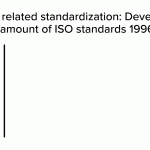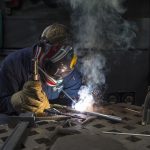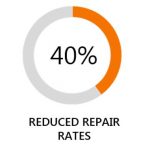The world is altering quickly. It is forecasted that in the next 10 years, we will be seeing more modifications in innovation than we’ve seen over the last hundred. As a basic procedure in the production market, welding is likewise gradually developing. Primary styles such as Industry 4.0 and the Internet of Things (IoT) have actually been signed up with by robotic welding, virtual truth, and device intelligence, all being welding patterns that are anticipated to dominate in 2021. At the very same time, subjects connected to welding education and welder’s health and wellness are acquiring more attention.
Fast development in robotic welding
Using robotics in the commercial world is proliferating. According to the International Federation of Robotics, there was over 2 million functional commercial robotics at the end of 2017. The number is approximated to grow worldwide by over 80% in the coming years, approaching 3.8 million robotics in 2021.
Welding robotics follows a comparable pattern. The international robotic welding market is predicted to reach USD 5.96 billion by 2023, growing at 8,91% Compound Annual Growth Rate (CAGR). The Asia Pacific is expected to be the biggest international robotic welding market in the coming years, with China leading the development in concentrating on embracing welding robotics in all possible markets. India, South Korea, Japan, and Thailand are growing markets in the area also.
The absence of certified welders will continue
While welding automation permits far greater performance and repeatable quality, there will constantly be some locations and conditions where robotics are simply insufficient. For instance, when there’s an excellent variation in the bonded parts, or in circumstances where mastery and movement are needed, competent welders deserve more than their weight in gold.
Nevertheless, with the broadening markets’ need for welders continuing to grow and more knowledgeable experts retiring each year, the primary absence of a certified welding labor force is most likely to continue. The issue is a lot more serious in the emerging markets. For instance, it has actually been approximated that India will experience a lack of 1.2 million certified welding experts by 2022.
Combating this problem needs active cooperation between the welding market, devices makers, and instructional institutes worldwide to allow welding education with modern-day devices and sharing of finest practices. With the intro of IoT, welding as a procedure is at a turning point. Digital services, connection, and automation are forming the future of the market and start to draw in youths to train to end up being the brand-new generation of welders and welding operators.

Advanced innovations are getting appeal Virtual Reality (VR) has actually generally been related to the video gaming market, however, it has actually been getting appeal likewise in the welding world.
Schools are utilizing VR applications to train brand-new welding specialists and display to their trainees the different markets– such as shipbuilding and building and construction of high-rise buildings– where welders are required. On the R&D side, brand-new item advancement can benefit significantly from VR. For instance, the assessment of style principles can be done essentially prior to producing any physical models, conserving both money and time.
On a more useful level, the advancement of welder assistive innovations is on the increase throughout the welding market. Effective welding trusts a mix of specification settings and options that are affected by a range of knowledge-based elements. Embedded innovations have the ability to direct even the less skilled welders towards a proper devices setup based upon fundamental information inputs, affecting ideal weld swimming pool habits and hence supporting exceptional welding quality. Uncomplicated and trustworthy welding device setup likewise changes into real efficiency enhancements, as seen with the intro of the digital welding treatment requirements (dWPS).
Financial investment in welding security increasing
Increasing understanding about the health risks connected with breathing damaging levels of welding fume and gases is driving businesses to invest more in occupational security. Following The IARC report in March 2017, reactions from the market all over the world are extensive, with federal governments restoring their matching laws and guidelines and business taking instant security actions to safeguard their employees.
It is mainly the ultra-fine and incredibly light great dust particles that position a danger to the welders. While correct ventilation or air purifying systems set up in the working area have the ability to do their part in keeping the air tidy and breathable, using breathing security devices is the most effective method of avoiding the advancement of occupational lung illness. Favorable pressure respirators develop a cool, comfy, and safe breathing environment that enables welders to focus on the task a hand and work their magic with the arc for many years to come.



Hola cómo puedo empezar a ser un buen soldador, soy del estado de puebla también tendrán escuela en este estado y si es costoso O dónde es para actualizarse en cuento a soldar